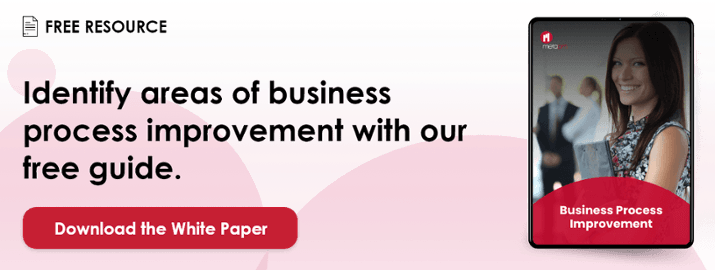Project Risk Management: A Proactive Approach to Minimise Uncertainties
Enhancing Stakeholder Engagement in Projects: Strategies for Australian Organisations
MetaPM Team
Uncertainties are an inherent part of any project - and how organisations manage them can make the difference between success and failure.
Project risk management is the systematic process of identifying, analysing, and mitigating potential risks to ensure projects stay on track.
Taking a proactive approach to risk management is crucial for project success.
In this blog, we explore the fundamentals of project risk management and why a proactive approach is essential.
The Fundamentals of Project Risk Management
Let’s begin by defining our terms and laying the groundwork for a strong understanding of project risk management.
Defining Project Risk Management
Project risk management is the art and science of identifying, analysing, and responding to risks throughout the life of a project. It involves systematically addressing the uncertainties that can affect a project's objectives.
The Role of Risk Management in Project Success
Successful projects aren't just about sticking to schedules and budgets. They also need to meet their objectives. Risk management plays a vital role in ensuring project success by proactively addressing potential roadblocks.
4 Key Components of Project Risk Management
Effective project risk management comprises four key components that span from identifying potential threats to managing them:
- Risk Identification: This is where potential risks are identified and documented. It's essential to cast a wide net and consider all possible threats.
- Risk Analysis and Assessment: Here, risks are evaluated in terms of their potential impact and likelihood. This analysis helps prioritise which risks to focus on.
- Risk Response Planning: In this phase, strategies are developed to deal with identified risks. This can include risk avoidance, mitigation, acceptance, or transfer.
- Risk Monitoring and Control: Throughout the project, risks are continuously monitored, and responses are adjusted as necessary.
How To Effectively Identify Project Risks

Identifying project risks is the first step in risk management. Without this crucial phase, other risk management efforts can be in vain. Organisations must take a comprehensive approach to identify potential risks.
4 Key Strategies for Identifying Risk
1. Brainstorming
Brainstorming entails convening the project team to facilitate an open discussion to identify various potential risks through creative thinking and collaborative problem-solving, fostering a culture of proactive risk identification and enhancing the project's adaptability.
2. Checklists
Checklists employ pre-established, comprehensive lists of prevalent project risks and examine the project against these lists. This systematic approach ensures that typical risks are not overlooked and serves as a foundational step in the risk identification process.
3. Historical Information
Historical information entails the retrospective evaluation of past projects, analysing their outcomes and lessons learned, and subsequently applying this acquired knowledge to the current project's risk management strategy.
4. Expert Judgment
Consult with professionals and subject matter experts with an extensive background in the project's domain. This strategy enables the project team to tap into their knowledge, glean insights, and gain valuable guidance to anticipate and address potential risks more effectively
The Significance of a Risk Register
A risk register is an indispensable component of risk management within any project. This document serves as the central repository for all identified risks, systematically cataloguing essential information about each risk to ensure they are adequately managed.
Within a typical risk register, you will find comprehensive details on the nature of each risk, including its potential causes and consequences. This document also outlines the likelihood of each risk occurring, its estimated impact on the project's objectives, and the corresponding action or response planned to address it.
The risk register is not a static resource. It evolves throughout the project's lifecycle. It continually incorporates new risks as they are identified and tracks the progress and effectiveness of risk mitigation strategies. As the project advances, the risk register serves as a valuable reference for project managers.
Risk Analysis and Assessment
Once risks are identified, the next step is to analyse and assess them. This step involves understanding the likelihood and potential impact of each risk. This analysis helps prioritise risks, focusing attention on the most critical ones.
Qualitative vs. Quantitative Risk Assessments
When it comes to project risk management, selecting the right assessment approach is a crucial step in ensuring the success of your project:
- Qualitative Risk Assessment: This involves assigning subjective values to the likelihood and impact of risks. It's a quick way to prioritise risks.
- Quantitative Risk Assessment: This is a more numerical approach, involving data analysis and modeling to determine risk probabilities and impacts.
The choice between qualitative and quantitative risk assessments hinges on the specific needs of your project.
Qualitative assessments provide a quick and pragmatic approach to prioritising risks based on subjective values, while quantitative assessments offer a more precise, data-driven analysis of probabilities and impacts.
Using Risk Matrices for Enhanced Risk Assessment
Risk matrices serve as invaluable visual aids in risk assessment, simplifying the often complex task of understanding and prioritising risks.
These graphical tools clearly and concisely represent each identified risk's likelihood and impact, enabling project teams to make informed decisions.
Risk matrices come in various formats, such as heat maps or scatter plots. They allow for a visual categorisation of risks, from low-likelihood, low-impact issues that might be of minimal concern to high-likelihood, high-impact risks that demand proactive mitigation.
By assigning risks to specific positions within the matrix based on these two dimensions, project managers can quickly discern which risks require immediate attention.
Risk Response Planning
Risk response planning involves developing strategies to address risks. Defining how each risk will be managed is crucial to avoid unnecessary surprises. The four main strategies include:
- Risk Avoidance: Changing project plans to eliminate the risk.
- Risk Mitigation: Taking actions to reduce the risk's impact or likelihood.
- Risk Acceptance: Deciding not to take any action against a particular risk.
- Risk Transfer: Shifting the responsibility for managing the risk to another party.
Well-documented risk response plans provide clear guidance on how to address specific risks. They ensure the entire team knows what to do when risks arise.
Continuous Risk Monitoring
Risk management isn't a one-time effort. Risks must be continuously monitored throughout the project. This allows for early identification of changes in risk conditions.
Adapting the Risk Management Plan
Sometimes, risk conditions change, and planned responses need adjustments. Being flexible and adaptive in risk management is crucial to address evolving risks effectively.
The Role of a Risk Owner
Assigning a risk owner is vital. This individual monitors a particular risk and ensures the planned responses are executed when needed.
The Benefits of a Proactive Approach

Taking a proactive approach to project risk management offers several advantages, including:
- Early Risk Identification and Mitigation: Catching potential issues early minimises their impact and keeps projects on track.
- Improved Decision-Making: Proactive insights lead to better-informed decisions, ensuring project success.
- Better Project Control: Manage schedules, budgets, and performance with greater precision.
- Increased Project Success Rates: Anticipating and mitigating risks elevates overall success rates.
- Enhanced Stakeholder Confidence: Stakeholders have more trust in projects with proactive risk management.
In short, a proactive approach anticipates and mitigates challenges for smoother, more successful projects.
Unlock the Power of Proactive Risk Management: A Roadmap to Project Success with MetaPM
Proactive project risk management is a cornerstone of successful projects. At MetaPM, we understand the transformative power of a proactive approach to minimise uncertainties.
Our services, including consulting, resourcing and Agile delivery solutions, are designed to empower your organisation to efficiently and effectively manage risks.
When organisations embrace proactive risk management, they unlock improved project management capabilities, ensuring their projects are more successful.
To discover how proactive project risk management can drive your organisation's success, contact MetaPM today.
Weekly Newsletter
Subscribe to our newsletter today to keep up to date on what’s happening.


